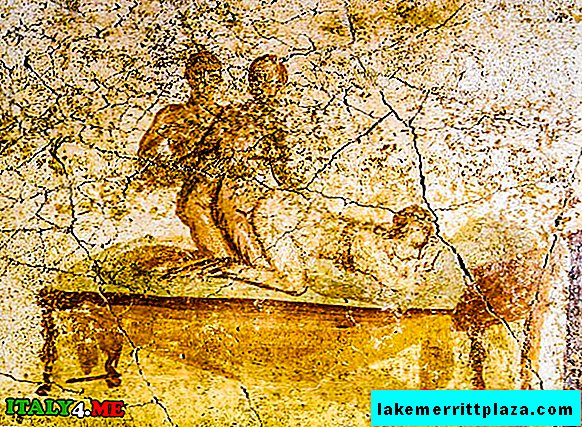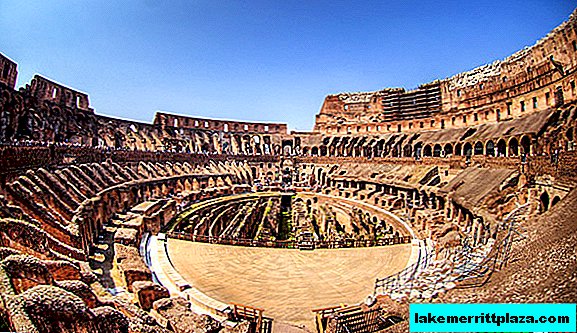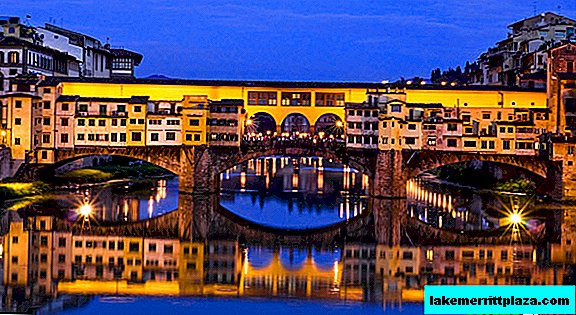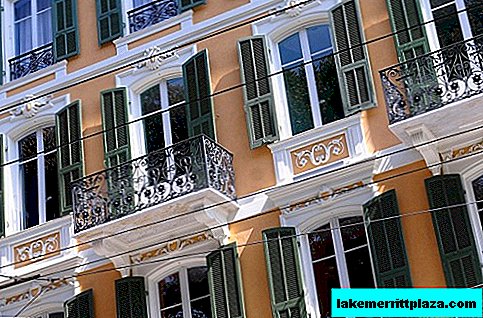Recently, more and more tourists who come to Italy on vacation, show their disrespect for the monuments of local culture. Someone is trying to steal something, while someone is trying to mark himself on the walls of architectural structures.
But, as experience and the latest news shows, all this is far from the limit of the "possibilities" of tourists.
We remembered the top ten most stupid acts of foreigners in Italy.
- Sex in the former Red Light District of Pompeii, surrounded by ancient and valuable frescoes. In 2014, a Frenchman and two Italians were taken here by surprise right in the midst of an orgy. “They don’t realize the importance of the frescoes,” complained the caretaker of the cultural and historical complex.

- It is impossible not to notice that the carrying of dangerous weapons in Italy is not accepted. However, a 62-year-old tourist from Germany neglected this and appeared in the center of Naples (Napoli) with a huge samurai sword in his hands. Later, he tried to convince the cops that he needed this cold weapon for self-defense.
- Last year, an American, who at that time was on vacation in Italy, got into trouble, accidentally broke a finger of a 600-year-old statue in the Florentine Gallery of Fine Arts Santa Maria del Fiore (Galleria dell'Opera di Santa Maria del Fiore operaduomo.firenze.it) . It is worth noting that the American who deprived the work of art by the sculptor Giovanni d'Amrogio, ironically, turned out to be a surgeon.
- Necessity or vandalism? Recently, more and more tourists are trying to perpetuate their name on the walls of the visiting card of Rome - the Colosseum. Tourists from Denmark and Germany have resorted to this method not so long ago. In January, an Australian who was visiting Italy had to pay a fine for having his 12-year-old son inscription with a pen on one of the walls of the Coliseum.

- In addition to the bad habit of leaving their contacts on centuries-old Italian buildings, tourists also do not miss the opportunity to steal a piece of it. In March this year, a teenage girl from Canada tried to steal one of its bricks from the long-suffering Coliseum. However, the girl was not able to do this: other tourists noticed the thief and reported this to the Colosseum employees, who, in turn, called the police.
- Dining out on the territory of Italian monuments and architectural monuments has only recently been allowed. But according to the decree signed in October 2012, Roman tourists will have to refrain from having a meal, while enjoying the beauties of the nearby architectural masterpiece. Otherwise, it will be an expensive pleasure: fines range from 25 to 500 euros.
- From time to time, tourists try to recreate a scene from the popular movie “La Dolce Vita” in the Trevi Fountain in Rome.
In May this year, a traveler from Australia was fined 180 euros after he jumped into a 250-year-old fountain. One of the passers-by managed to shoot this crazy act on the camera, and later he uploaded the video to YouTube.
- A little tourist from America managed to anger the whole of Florence after she met the need right in the taxi rank in the very center of the city. Taxi drivers and ordinary passers-by looked with surprise and condemnation at the girl who perched between the two cars.
- Some tourists can not resist the temptation to add something of their own to the already existing masterpieces of Italian culture. Last year, a girl from Turkey had to pay a fine of 260 euros for vandalism, as well as personally clean that part of the famous Ponte Vecchio bridge, where she tried to put her name on with nail polish. In the same month, a tourist from Germany suffered a similar punishment and a fine, whose daughter "marked" herself on the sights of Florence with a ballpoint pen.

- In 2012, two young foreigners who came to Italy on vacation, under the influence of drugs and alcohol, decided to do carnal pleasures right under the statue of the famous poet of the Middle Ages, Dante Alighieri in Santa Croce square in Florence. This incident so outraged the locals that even the mayor issued a condemnation of the couple, complaining that the center of Florence has become "an open air brothel."











